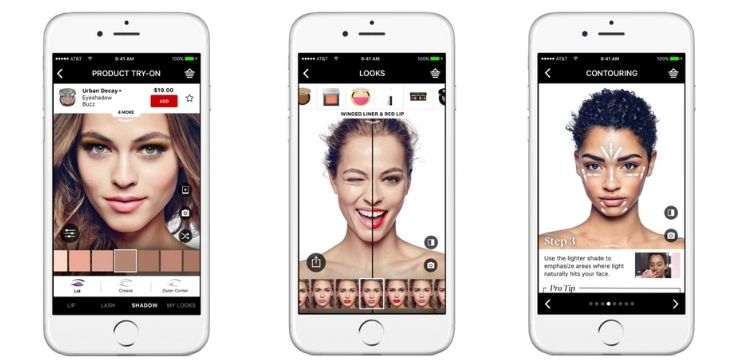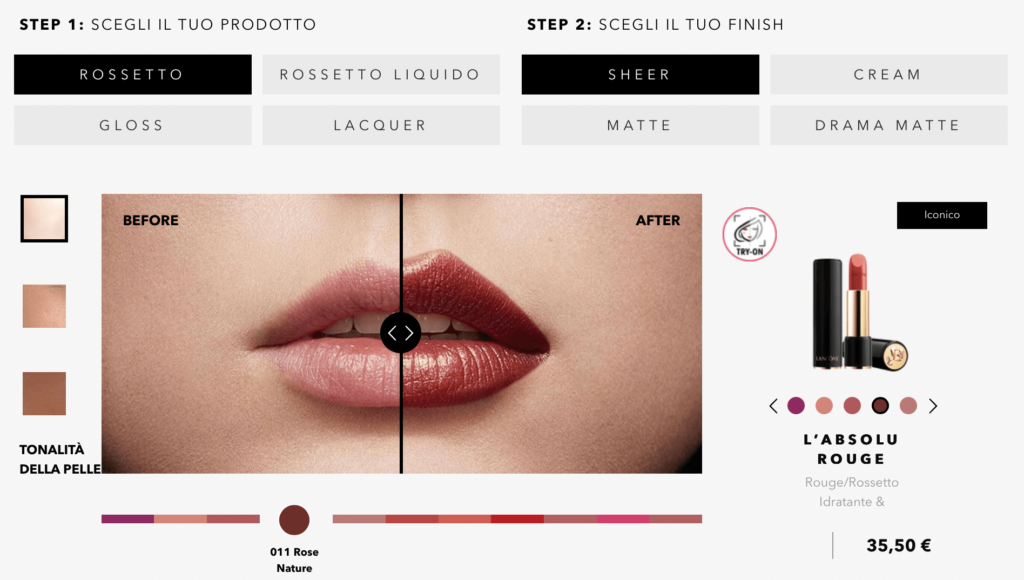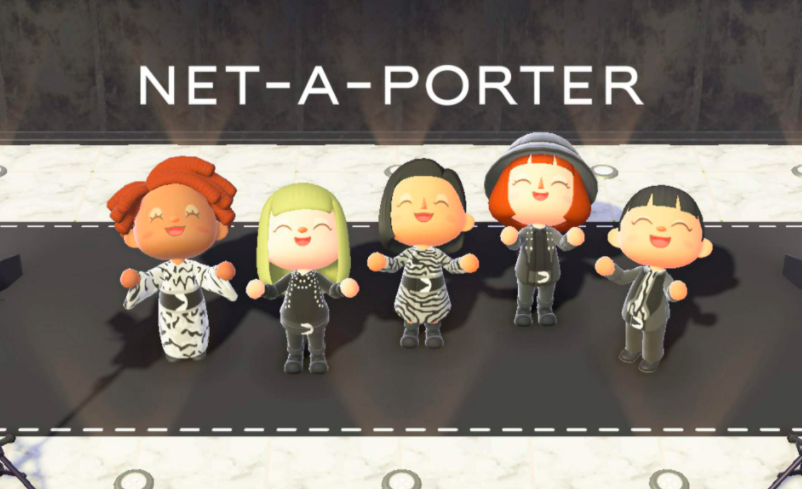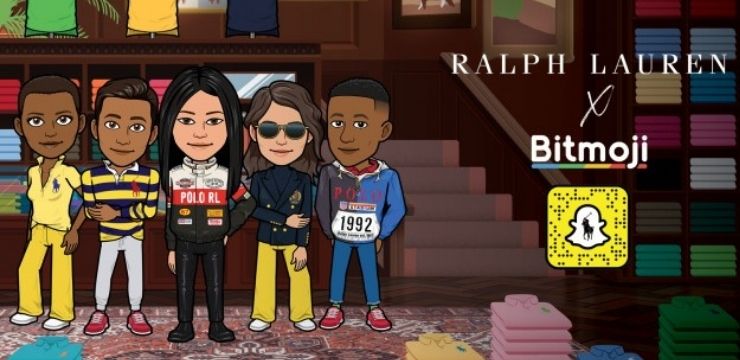
Without a doubt, many digital trends have emerged and evolved very fast during COVID-19 pandemic. Also when it comes to digital fashion and virtual clothing. We have investigated the scenarios and new perspective.

The fashion industry has been hit by this crisis even more than other industries: being stuck at home has entirely erased the need to buy new clothes and share fashionable outfits.
However, if the fashion system, characterized by a high degree of creativity and permeability, has for decades influenced and being influenced by cultural, social and economic phenomena, we expect what will happen in the next months to be something disruptive and never seen before.
The most relevant phenomenon we are witnessing today, accelerated by the pandemic, is the rise of Digital Fashion and AR Clothing.
The digital transformation of the fashion industry has arrived much later compared to other industries. The values of tradition and heritage of the brands, the material and aesthetic values of garments have for a long time generated a perception of “digital” as opposed to “physical”.
Nevertheless, our industry is one of the fastest in absorbing social evolutions. When the Gen Z kicked in with higher market power and speaking voice, the fashion brands have realized how much a somehow digital experience is fundamental to be appealing to those young folks.
Creating digital garments as part of a digitally immersive experience has certainly been one of the most relevant solutions offered by brands.
Which are the applications we have seen in these last months? We can classify them according to the relationship between digital products with a physical or digital environment, and between digital and physical products if any.


COVID-19 forced brands to rethink how they could re-open safely to present their new collections. This pushed them to appreciate how immersive technologies can build a bridge between the physical and digital spaces, connecting brands with customers.
The pioneers in this direction were the cosmetic brands for two main reasons: first, it is simpler to track the customers’ face and not the entire body; secondly, COVID-19 generated more sensibility towards hygiene, hence trying without touching is even more important for a lipstick rather than a dress.
Most of the cosmetics brands today offer a virtual try-on such as MAC, Urban Decay, L’Oréal and many others.

The concept of creating a digital avatar is definitely not new. We have witnessed several attempts in the past decades, think of Second Life, launched in 2003, one of the most successful games back in the days.
However, today the most interesting phenomenon is how fashion is interacting with the digital gaming industry.

The esports and gaming market, boosted by lockdowns and social distancing, is expected to reach 2.7 billion players by the end of 2020
(as reported by Newzoo.com).
In addition, maybe surprisingly, the game enthusiasts today are not male geeks with no social life, but for instance, 46% of them are women.
Moreover, gamers and esports fans are increasingly revealing themselves to be beauty and fashion consumers eager to spend both on in-apps and real-life products. Those data have certainly catched brands’ attention.
This evolution has created opportunities for brands to see this cohort as a marketable audience of potential customers.
One of the first brand to start a collaboration with the gaming industry was Louis Vuitton that in September 2019 has launched the Louis Vuitton skins for League of Legends. For those who are not gaming enthusiasts this means that players could purchase the outfits for their characters for around $10.
After the success, in December, Louis Vuitton launched a physical collection designed by the same designer Nicolas Ghesquière. The pieces ranged from a $170 bandeau to a $5,600 leather jacket.
Several brands followed launching collaborations with different gaming platforms. Animal Crossing for instance had its first virtual fashion show where avatars dressed up in current season looks inspired by Loewe, Prada, and GmbH.
Animal Crossing is a very interesting case, as it consists of a heavenly reality in which everyone lives on a desert island surrounded by anthropomorphic animals.
They can amuse themselves in building houses and shops, or engage in activities such as gardening or interior design or, finally, virtual shopping (with imaginary money).
Valentino was one of the most relevant luxury brands that has introduced its digital outfit on Animal Crossing, also engaging in influencer marketing activities, such as the collaboration with the Italian rapper Ghali.

To keep the exclusivity related to the luxury world, those collections present the concept of digital scarcity, meaning that they go sold out in a very limited period.
Animal Crossing also allows users to create their look from scratch by choosing the exact hem length, flounce, or pattern for their avatar. Thanks to this customization feature, it has seen the potentiality of the game to exploit more this fashion link, organizing a fashion show on Animal Crossing that has been set up by the stylish and fashion director Marc Goehring and the photographer Kara Chung (already famous for collecting the best Animal Crossing outfits on an IG account). The virtual fashion show that was organized by Reference Festival consists of a three minutes video clip, where the Animal Crossing avatars walk the catwalk dressing up the outfits inspired by Prada, Lowe, or other brands.
In this case, the user-generated content of the videogame inspired by famous brands transforms itself into real official events. It will be not surprising if other brands will be interested in approaching the gaming industry as this example clearly shows how videogames and fashion companies can innovate and create value together.

If the gaming industry has recorded numerous collaborations in the digital fashion realm, the social media giants are not lagging behind. Snapchat has launched a collaboration with Ralph Lauren creating a branded wardrobe for the Bitmoji. Snapchat users will be able to shop for their Bitmoji in a Ralph Lauren-branded store within the Bitmoji app and Snapchat.
Bitmoji is another app that is experimenting with digital wardrobes. CEO Ba Blackstock says that a big trend among users has been “twinning” with their Bitmoji, including posting side-by-side photos. He also says that users sometimes dress their avatars aspirationally, and experiment with new looks through their Bitmoji.


So far, we have discussed digital fashion as something to be linked purely to a digital world, and in particular to a game character or to our avatar or bitmoji. A step forward is wearing our “real” selves through digital garments.
This is the challenge launched by IL3X, a purely digital fashion brand, that has just announced the platform ARdrobe.
Customers can buy digital clothes that will be worn by themselves on social media, think at an Instagram filter for instance. We are talking about augmented reality: digital applied to the real world.
The idea is to share our favorite outfit on our social channels by buying virtual garments. It’s a matter of fact that in some cases customers buy clothes to share their look on the virtual world. So, why not buying them virtual in the first place?
IL3X launched the first collaboration with Missoni. The brand has introduced on Instagram the virtual face masks branded Missoni. In this case, the brand has reproduced virtually some products sold also as physical products. However, going forward ARdrobe has the intention to sell items not present in the physical world but just in the digital space.
MOD4, the already successful gaming app by LuisaViaRoma, is now crossing the boundaries of the physical world to fiercely embrace the digital one. Indeed, MOD4 has joined a partnership with the largest digital fashion retailer, DRESSX. While the concept behind MOD4 was, at least at the beginning, that of involving an increasingly large customer base in a new experience of shopping online, e.g. by means of styling challenges between avatars, DRESSX’ objective is to promote a more sustainable and cutting-edge fashion industry via digital garments. Indeed, the company provides its clients with virtual clothes that users can cunningly feature on their social media accounts for content creation, but that don’t have a physical counterpart.
Through this partnership, MOD4 and, thus, LuisaViaRoma, took the decisive step towards digital fashion. Indeed, apart from the usual functions of the app, such as the creation of a customised avatar to be dressed with every product of the e-commerce’s catalogue, gamers have now the opportunity to try on their digital selves one or more DRESSX’ garments. Then, if the fitting is particularly satisfying, the user can also buy the dress from DRESSX and have fun by sharing on social media platforms their pics while wearing it: an all-around interactive experience.


Fashion Technology Accelerator has always pushed the concept of sustainability in the fashion and luxury industry.
Can this digital approach be also a way to reduce the incredible rise of fashion consumption and the constant overproduction this industry faces?
Considering that sometimes buying fashion clothes is the answer to the need of instant gratification and on average we wear the same clothes 7 times, probably creating a hybrid wardrobe with a mix of digital fast fashion clothes and high quality, long-lasting physical clothes could be a solution.

Giusy Cannone is Chief Executive Officer of Fashion Technology Accelerator.
She is the reference point for FTA’s corporate projects, also creating business connections for startups in the Acceleration Program and mentoring participants of our Masterclasses,